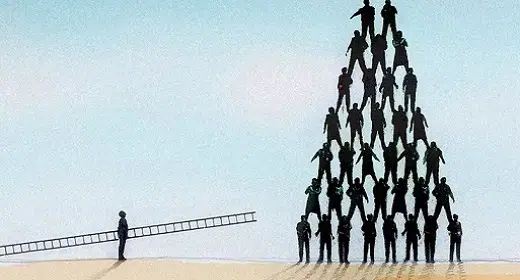by Kendra Cherry: Anyone who has ever taken a psychology class probably has at least a basic understanding of Abraham Maslow‘s hierarchy of needs…
Maslow suggested that needs at the base of the pyramid, which include things such as food, water, and sleep, must be met before people can move on to needs higher up on the hierarchy.1
After fulfilling these fundamental needs, people move on to the need for safety and security, then belonging and love, and then esteem. Finally, once all these lower-level needs are met, Maslow suggested that people move on to the need at the peak of the pyramid, which is known as self-actualization.
A 1976 paper by Wahba and Bridwell suggested that the uncritical acceptance of Maslow’s hierarchy needed to be addressed by additional research. Their review of the research available at the time found little support for the accuracy of the hierarchy.2 More recent research has offered some support for Maslow’s original hierarchy, but many suggest that the theory might be in need of an update to better reflect the needs of modern life.
Does Maslow’s Hierarchy Hold Up?
Maslow’s hierarchy of needs continues to be widely popular and mostly well-accepted, but the available evidence does not necessarily support Maslow’s theory. “Maslow’s need hierarchy theory presents the student of work motivation with an interesting paradox,” Wahba and Bridwell wrote. “The theory is widely accepted, but there is little evidence to support it.”
- In their review of the available research, Wahba and Bridwell found that there was little empirical support suggesting that needs exist in a hierarchy at all.
- Maslow’s theory also does not account for differences between individualist and collectivist cultures.3
- Other critics have also suggested that the original hierarchy does not account for the fact that needs tend to change based on the situation.
Is It Time for an Update?
In 2010, a team of psychologists attempted to modernize Maslow’s hierarchy. Their renovated version of the classic needs pyramid was published in an issue of Perspectives on Psychological Sciences.3 While the original hierarchy contained five levels, this revised version included seven.
The bottom four levels of this new version are quite similar to Maslow’s, but big changes can be seen at the top levels of the proposed new version. Perhaps the most surprising change was that it eliminated the very highest levels of the original version—that of self-actualization.
The authors of the article suggested that while self-actualization is still significant and interesting, it is not an evolutionarily fundamental need.
Instead, the authors suggested, many of the activities and pursuits that Maslow initially identified as self-actualizing represent basic biological drives, such as attracting a mate and having children.
The Updated Hierarchy of Needs
So what replaces self-actualization at the top of this revised hierarchy?
- Parenting takes the top spot, followed by
- Mate retention
- Mate acquisition
- Status/esteem
- Affiliation
- Self-protection
- Immediate physiological needs make up the very base of the pyramid.
“Among human aspirations that are most biologically fundamental are those that ultimately facilitate reproduction of our genes in our children’s children,” explained the study’s lead author Douglas Kenrick of Arizona State University in a press release.4 “For that reason, parenting is paramount.”
The proposed revisions to Maslow’s original hierarchy did not come without controversy, however. The journal issue containing the revised hierarchy also included four different commentary pieces that offered perspectives on the original and revised versions of the hierarchy.4 While many agreed with the basic premise of the revised version, particularly the evolutionary basis for the revisions, many took issue with the removal of self-actualization as a key motivating need.
Needs Across Cultures
Psychologist Ed Diener of the University of Illinois led a study that put the famous hierarchy of needs to the test in different countries all over the world.5 The researchers analyzed surveys on food, shelter, safety, money, social support, respect, and emotions taken in 123 different countries between 2005 and 2010. While some aspects of their findings are consistent with Maslow’s theory, there were also some notable departures.
The needs described in Maslow’s theory appear to be universal. However, research shows that the order in which these needs are met had little impact on people’s satisfaction with life.
“Our findings suggest that Maslow’s theory is largely correct. In cultures all over the world, the fulfillment of his proposed needs correlates with happiness,” Diener explained in a press release. “However, an important departure from Maslow’s theory is that we found that a person can report having good social relationships and self-actualization even if their basic needs and safety needs are not completely fulfilled.”
While recent research seems to support the idea of universal human needs, support for Maslow’s ranked hierarchy remains elusive.





















































